Gyouree Kim is a fashion designer passionate about sustainability and craftsmanship. She started learning fashion design 9years ago in South Korea before she came to London in 2018 to broaden her horizons. This awakened her awareness for the environment and sustainability which became a big part of her design ethic. It also lead her to create a contemporary corsetry collection that delivers a commentary on the current environmental issues in design.
Gyouree Kim


The very initial journey of my work started with my experience of having chronic digestive problems. Having to embrace unpredictable and uncomfortable bodily functions such as IBS; to see them as a normal part of being human, rather than something to be ashamed of.
To release and ease the discomfort of human health, I chose corsetry as my motivation for my continuous design source in my creations. Inspired by its intriguing form of meticulous craftsmanship throughout history, I aim to bring up its details and silhouette that pays special attention to the abdominal area to potentially produce a comfortable and supportive corset - to assist as opposed to restrain. In other words, in contrast to how modern people view a corset as being an uncomfortable and restrictive garment, I wanted to question if it could be re-invented as a healthy and supportive object.
Each corset I have designed has its own usefulness by using a variety of sustainable materials, where the corset has remained a continuous design idea and inspiration for my garments. The latest exploration is with the use of bio-materials which I have integrated into my work to create sophisticated bio-couture that aims to balance ecological awareness and artistic expression.
Since last year, the recent pandemic has brought with it a depression which has reduced the productivity of many designers, but it has also given me time to look at and connect with my local community. Currently, I’m collaborating with a silk printing textile designer, Meredith Wood. Our collaboration is to widen our circles of impact in sustainable fashion by joining artists who value environmentally conscious work using eco-friendly techniques in their work.





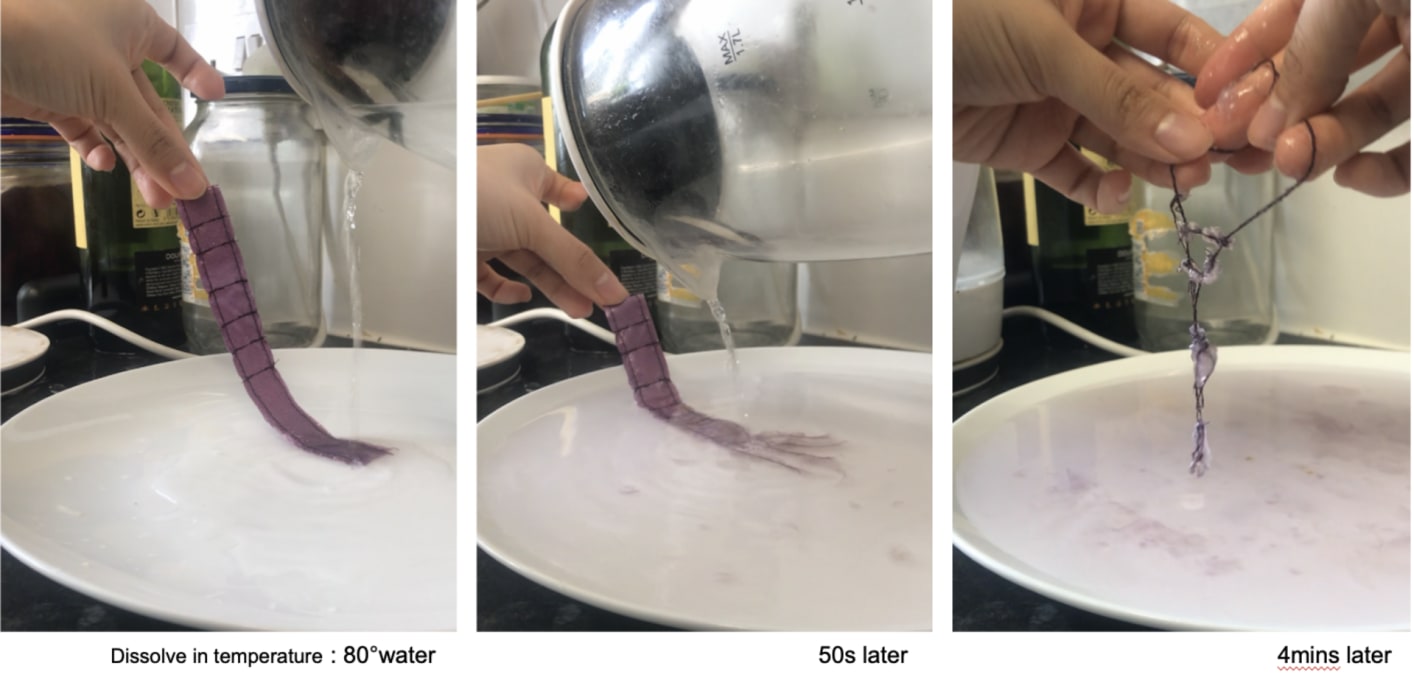
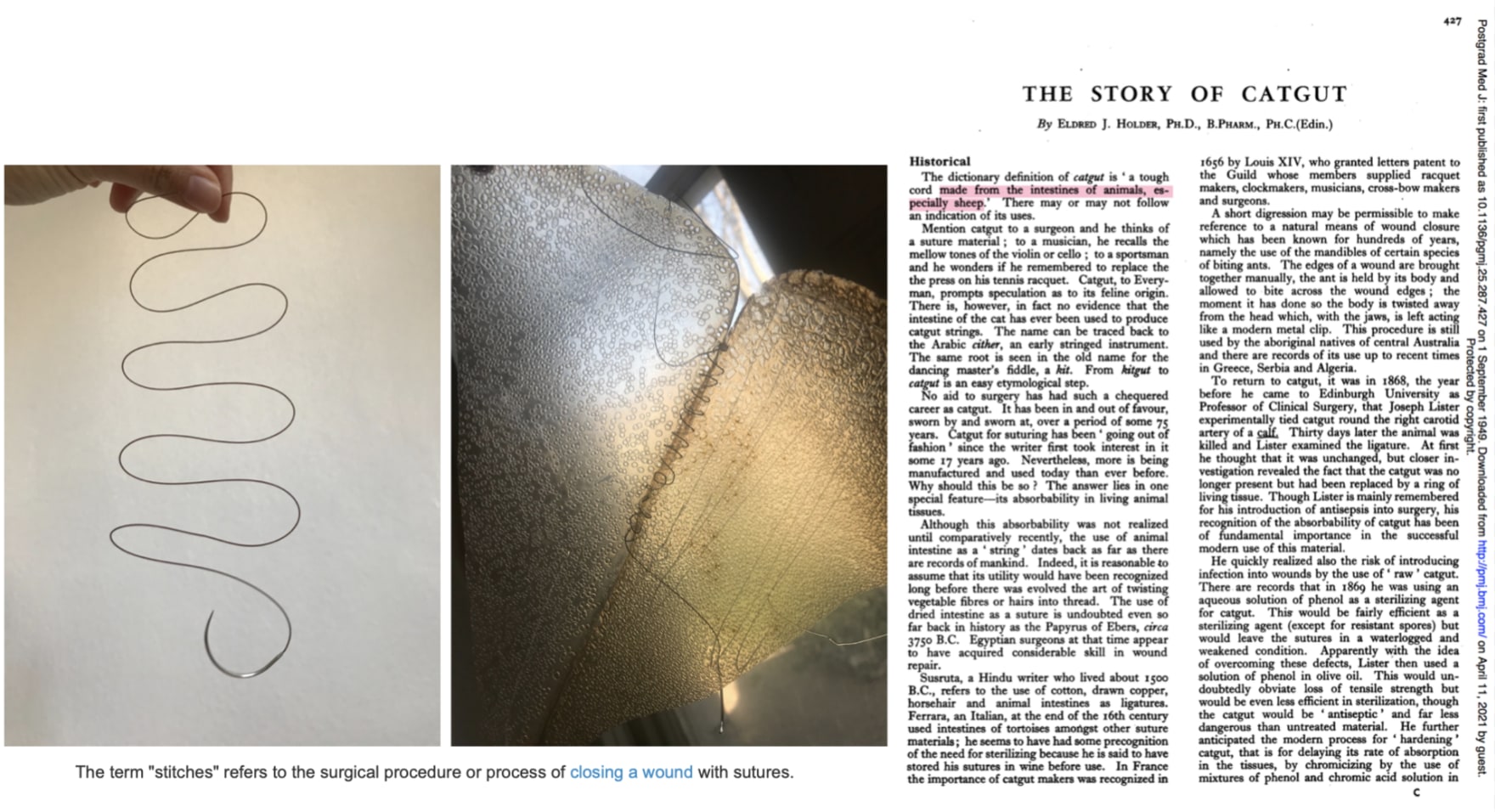

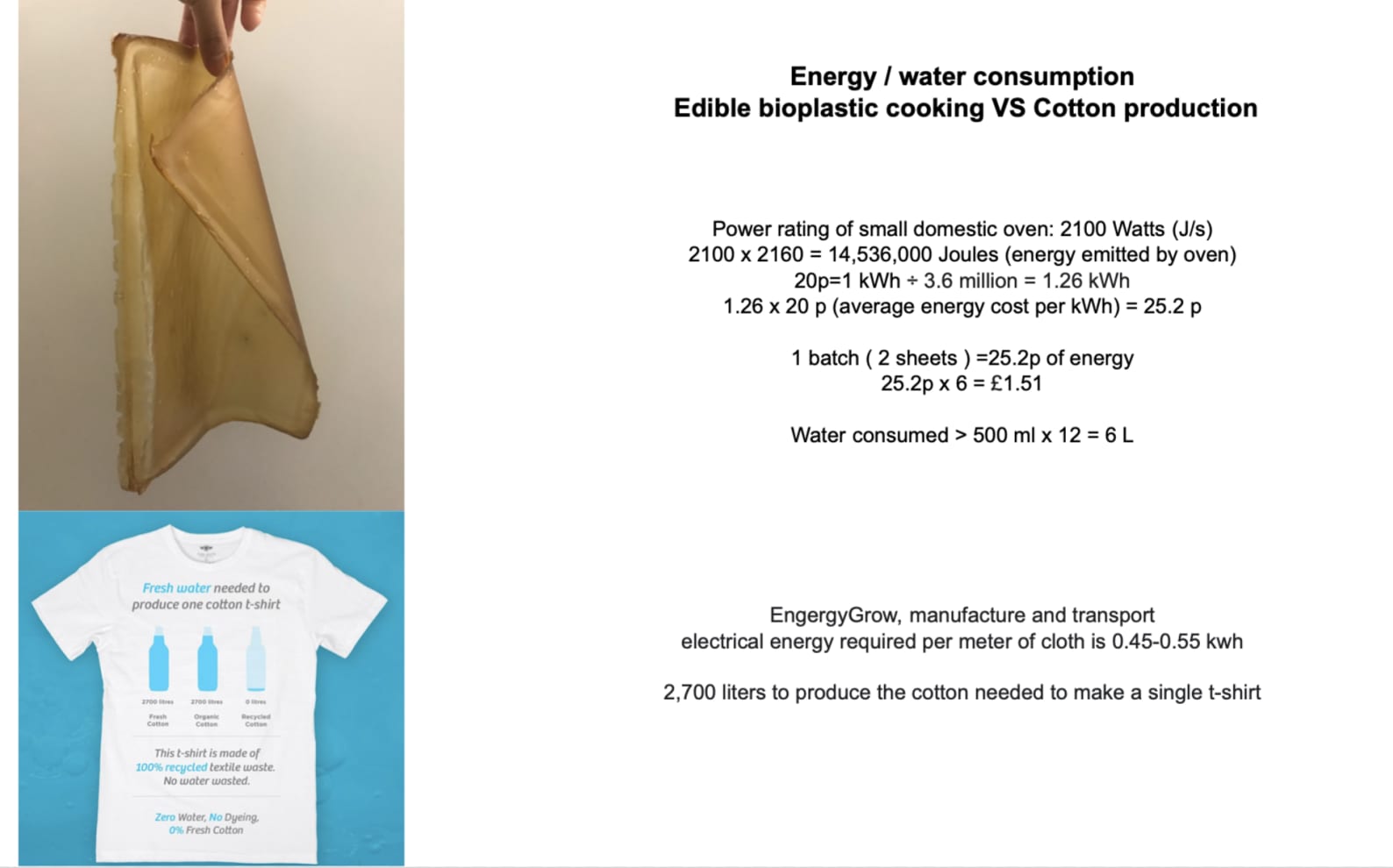
Introduction to radically new material which is yet quite unknown in fashion. This corset consists of water and carrageenan which is Irish moss, a type of seaweed.
The busk and eyelet parts of this corset are 3d printed with cornstarch filament and a domestic 3d printer, those items are drawn in 3d software called Rhino before it's printed.
The recipe for cooking the seaweed bioplastic consisted of 98% water and 2% a combination of seaweed, potato starch and glycerin. By using orange peel, annatto seed and cake colourant it creates different colour variations and shades.
Medium:
Seaweed bioplastic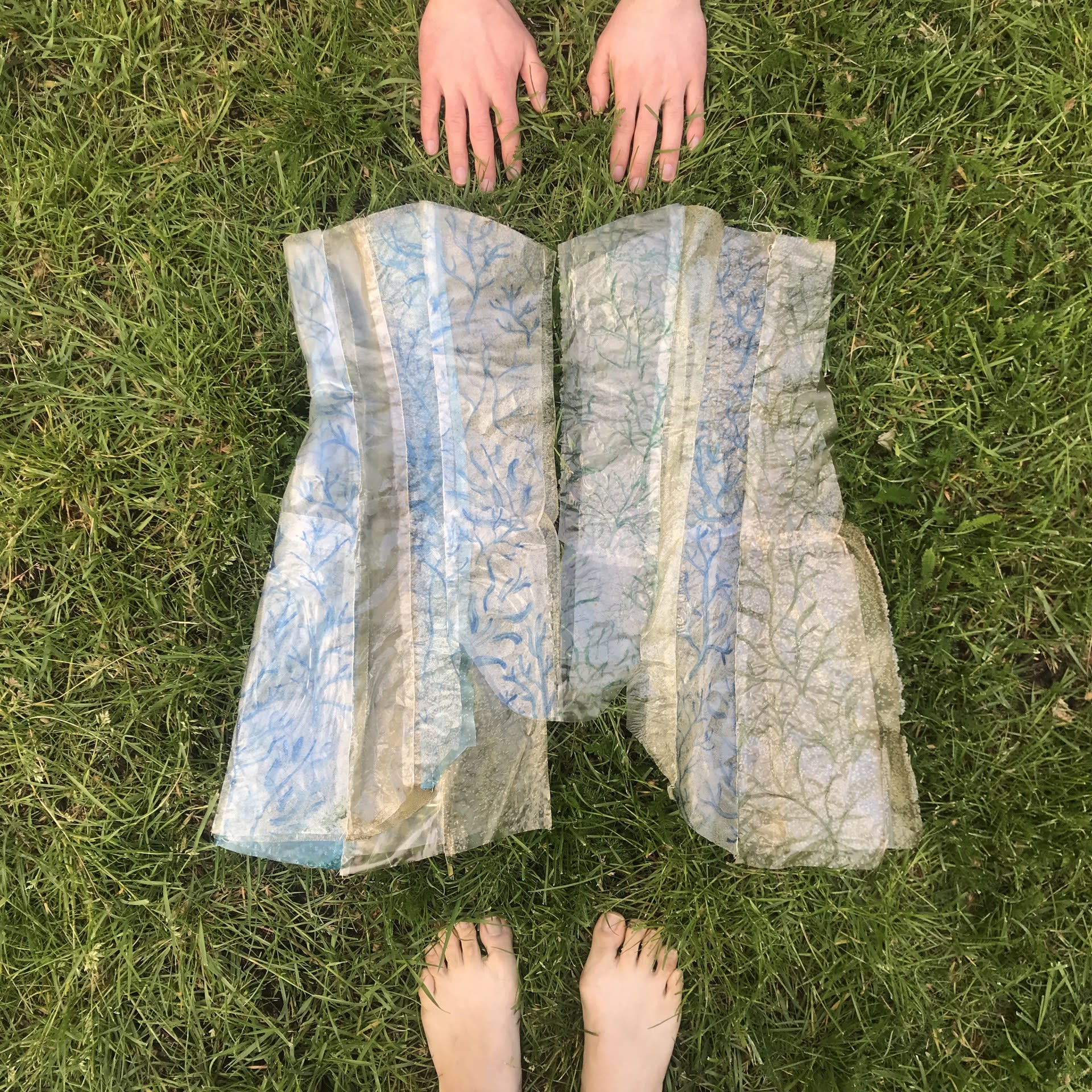





In collaboration with Meredith, we aimed to create biomimicry fashion and textile.
Meredith developed her own new natural paste and recipes out of seaweed and algae in her screen printing process to make naturally waterproof and biodegradable material alternative to current fashion fabrics moving away from toxic dyes.
Her natural algae paste is printed on seaweed bioplastics, creating a range of green and blue colours from the seaweed obtained from seaside.
Medium:
Seaweed bioplastic, algae paste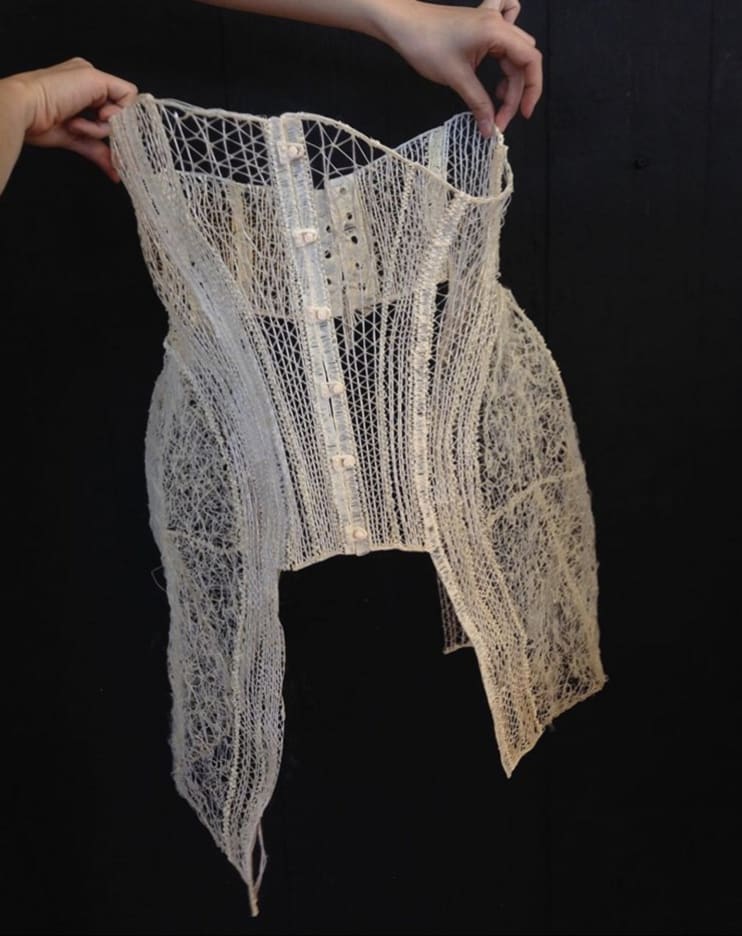



![[untitled]](https://res.cloudinary.com/rca2020/image/upload/f_auto,h_2560,w_1920,c_fill,g_auto,q_auto/v1/rca2021/60c3fb6ba98c7847e51bae77-252269?_a=AXAH4S10)
![[untitled]](https://res.cloudinary.com/rca2020/image/upload/f_auto,h_1440,w_1920,c_fill,g_auto,q_auto/v1/rca2021/60c3fb6ba98c7847e51bae77-643805?_a=AXAH4S10)
![[untitled]](https://res.cloudinary.com/rca2020/image/upload/f_auto,h_1358,w_1002,c_fill,g_auto,q_auto/v1/rca2021/60c3fb6ba98c7847e51bae77-742409?_a=AXAH4S10)
![[untitled]](https://res.cloudinary.com/rca2020/image/upload/f_auto,h_1334,w_750,c_fill,g_auto,q_auto/v1/rca2021/60c3fb6ba98c7847e51bae77-672286?_a=AXAH4S10)
![[untitled]](https://res.cloudinary.com/rca2020/image/upload/f_auto,h_1440,w_1920,c_fill,g_auto,q_auto/v1/rca2021/60c3fb6ba98c7847e51bae77-695688?_a=AXAH4S10)
![[untitled]](https://res.cloudinary.com/rca2020/image/upload/f_auto,h_2560,w_1920,c_fill,g_auto,q_auto/v1/rca2021/60c3fb6ba98c7847e51bae77-660118?_a=AXAH4S10)
There are so many raw materials which are simply thrown out. However, we can find solutions which present them a second life with a greater purpose. Producing different material states from the same substance, this Cor(n)set is renewable and biodegradable.The boning is made of compostable corn starch filament and they are integrated with cellulose yarn. When the CORnSET reaches the end of its life, it can be returned to the earth.
Medium:
Cornstarch filament



Make garments in a practical and functional way, which is supportive and relieves pain. At the same time, as a designer, we have a capability of adapting new techniques with being eco-conscious and focusing on sustainability through collaborating with natural resources such as organic waste: we need to give it a new value and turn it into a desirable source and also increase bio content up for achieving guilty-free, conscious fashion that can be bring up to consumer level.
Medium:
paper silk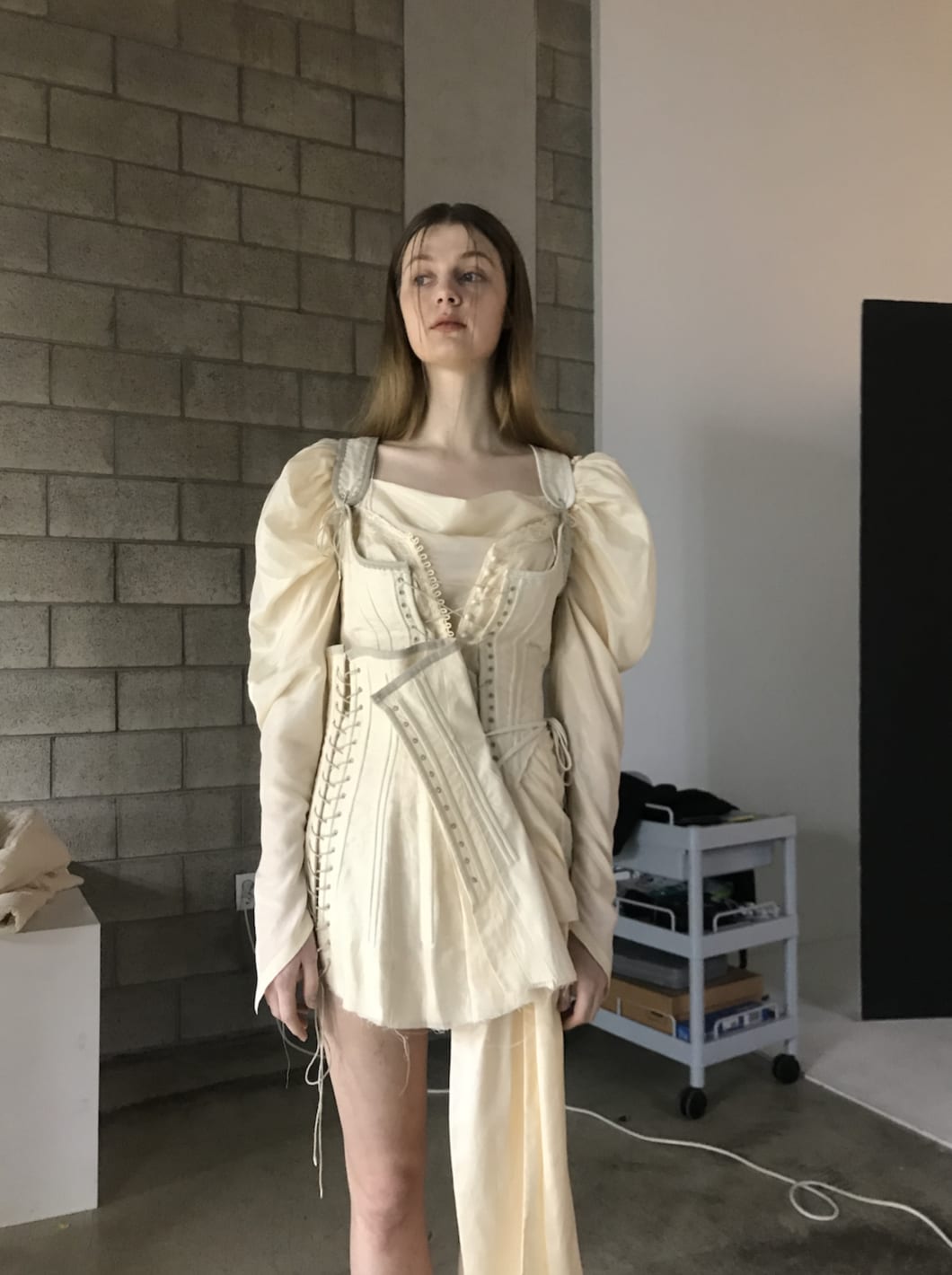

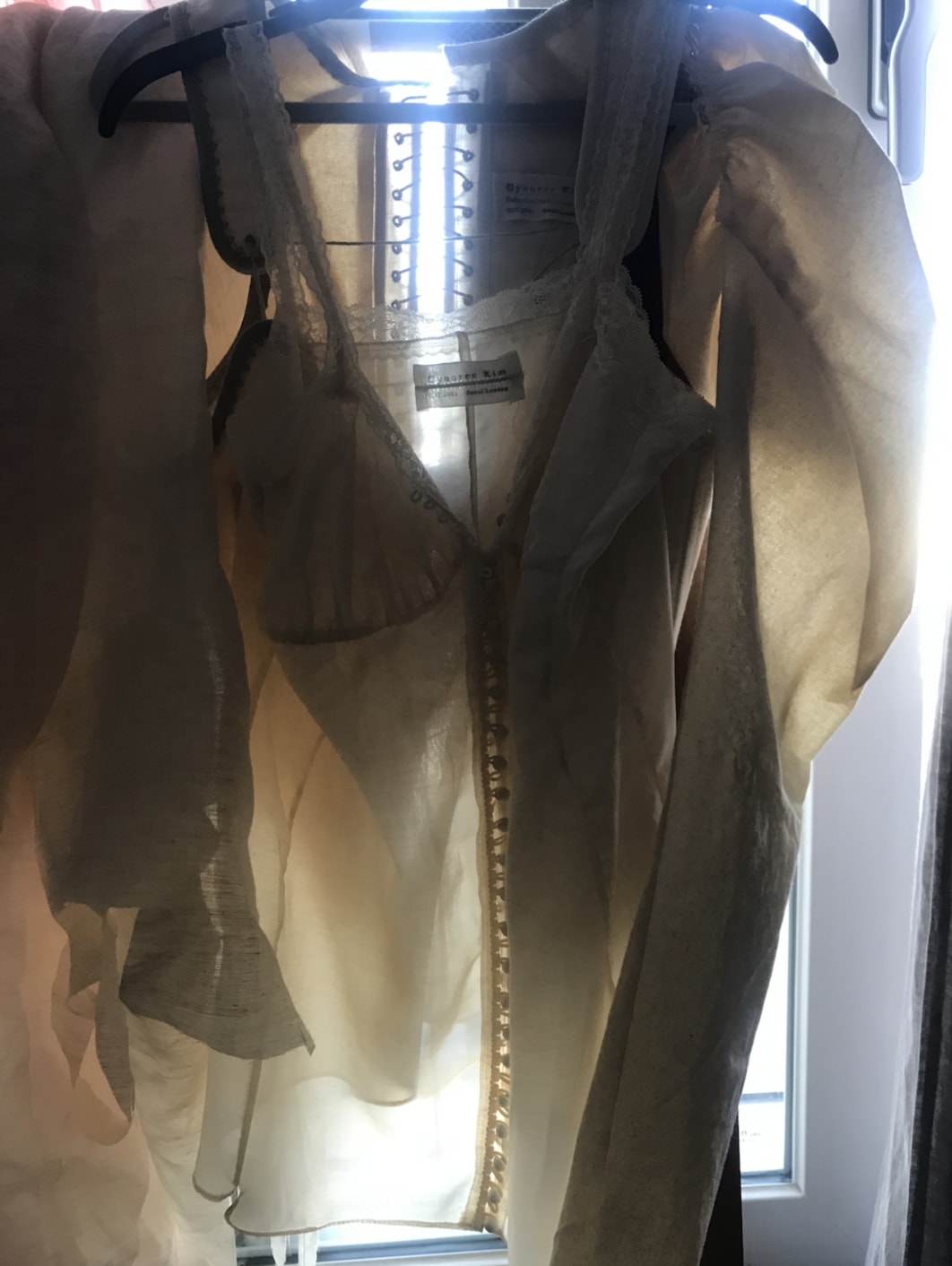


![[untitled]](https://res.cloudinary.com/rca2020/image/upload/f_auto,h_2148,w_1920,c_fill,g_auto,q_auto/v1/rca2021/60c5ce6fa98c7847e5be9e6b-997204?_a=AXAH4S10)
![[untitled]](https://res.cloudinary.com/rca2020/image/upload/f_auto,h_2560,w_1439,c_fill,g_auto,q_auto/v1/rca2021/60c5ce6fa98c7847e5be9e6b-973907?_a=AXAH4S10)
One of the ways of producing zero-waste garments that are harmless to their environment is by giving leftovers new value by turning them into desirable and durable pieces. Although recent pandemic has brought with it a depression especially when she had to go back to Korea, it has also given her time to look at and connect with her local community. The whole collection uses the waste from stock fabric suppliers in her town in South Korea, allowing it to reduce its ecological footprint and prevent new waste being generated.